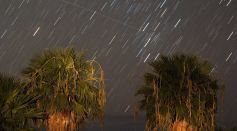SPACE

UK's First Commercial Rocket Launch Is Set to Lift off From the Shetland Islands in 2021

Dwarf Planet Ceres May Have Been an Ocean World

NASA to Remove “Insensitive” and “Harmful” Names

The Perseid Meteor Shower's Peak Is Just Days Away!

Gigantic Wave of Poisonous Tsunami Captured Crossing Across Venus
China Launches Two New Satellites From The Gobi Desert

Space Junk May Now Be Monitored, Even During the Day

Other Stars Can Support Up To Seven Habitable Planets

SpaceX Starship SN5 Completes Its 150m Hop
Sending Something to Space? Book Your Launch Now in Spaceflight Inc. and Avail Their Latest Offers

British CEO Richard Branson Is Set to Leave Earth in 2021

Ice Sheets Created Mars Valleys, Not Rivers

Study: Phoenix Stream Could Help Explain Milky Way Formation
ALMA Captures Image of the Planet Factory
Most Popular

Universe Origin Revealed: Exploring the Latest Big Bang Science Theories and Discoveries

Big Bang Physics and Cosmology: Can Science Really Explain the Origins of the Universe?

Space Tourism Future: How Commercial Space Travel Will Transform Civilian Exploration

How Space Observation and the Solar Light Spectrum Make the Sun Look Different in Space Than on Earth





